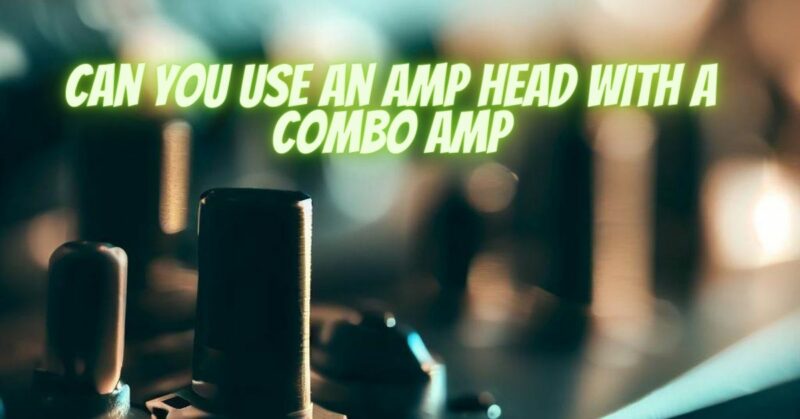Amplification is a crucial aspect of any musician’s setup, whether playing guitar, bass, or other instruments. For guitarists, the choice between using an amp head and a combo amp is a common consideration. But can you use both an amp head and a combo amp together? The answer is yes, and this approach offers certain advantages and creative possibilities. In this article, we will explore the concept of using an amp head alongside a combo amp, the reasons behind this setup, and how musicians can benefit from combining these two amplification options.
- Understanding the Amp Head and Combo Amp
An amp head is the top part of an amplifier that houses the preamp, power amp, and sometimes additional features like effects loops. It typically doesn’t have built-in speakers and requires an external speaker cabinet to produce sound.
On the other hand, a combo amp integrates the amplifier head and speaker cabinet into a single unit, providing a self-contained amplification solution.
- Using an Amp Head and Combo Amp Together
Musicians can use an amp head alongside a combo amp by bypassing the combo amp’s internal speakers and connecting the amp head to an external speaker cabinet. This setup allows for several creative options and benefits:
a. Expanded Sound and Power: Using an amp head with a higher wattage than the combo amp’s built-in power amp can provide increased volume and headroom for larger venues or band performances.
b. Tonal Versatility: Musicians can experiment with different speaker cabinets, each with its unique sonic characteristics, to tailor their sound to specific genres or playing styles.
c. Amp Stacking: Running both the combo amp and amp head simultaneously, sometimes referred to as “amp stacking,” creates a layered and complex tonal palette.
d. Signal Routing: Amp heads often have additional features like effects loops, line-outs, or multiple channels, offering more routing options for signal processing and recording.
- Using an A/B/Y Switch
An A/B/Y switch is a device that allows musicians to select between different inputs or outputs. Using an A/B/Y switch, a guitarist can seamlessly switch between the combo amp and the amp head or run both simultaneously. This enables quick changes between different tones or combinations of amplification.
- Considerations and Limitations
When using an amp head alongside a combo amp, musicians should consider the following:
a. Impedance Matching: Ensure that the amp head’s output impedance matches the speaker cabinet’s impedance to avoid potential damage to the equipment.
b. Power Handling: Verify that the speaker cabinet can handle the wattage output of the amp head to prevent speaker damage.
c. Weight and Portability: Combining both amp head and combo amp setups can increase the weight and size of the overall rig, affecting portability.
d. Sound Balance: Finding the right balance between the combo amp and the amp head’s output levels is crucial to achieving a cohesive and balanced sound.
Using an amp head alongside a combo amp offers musicians a versatile and creative amplification setup. This approach allows for expanded sound, increased power, tonal flexibility, and unique signal routing options. By understanding impedance matching, power handling, and using an A/B/Y switch, musicians can seamlessly integrate both amplification options into their setups. However, it’s essential to carefully balance sound levels and consider portability when combining amp head and combo amp configurations. With the right setup and a bit of experimentation, musicians can enjoy a dynamic and inspiring amplification solution that suits their musical needs and preferences.


